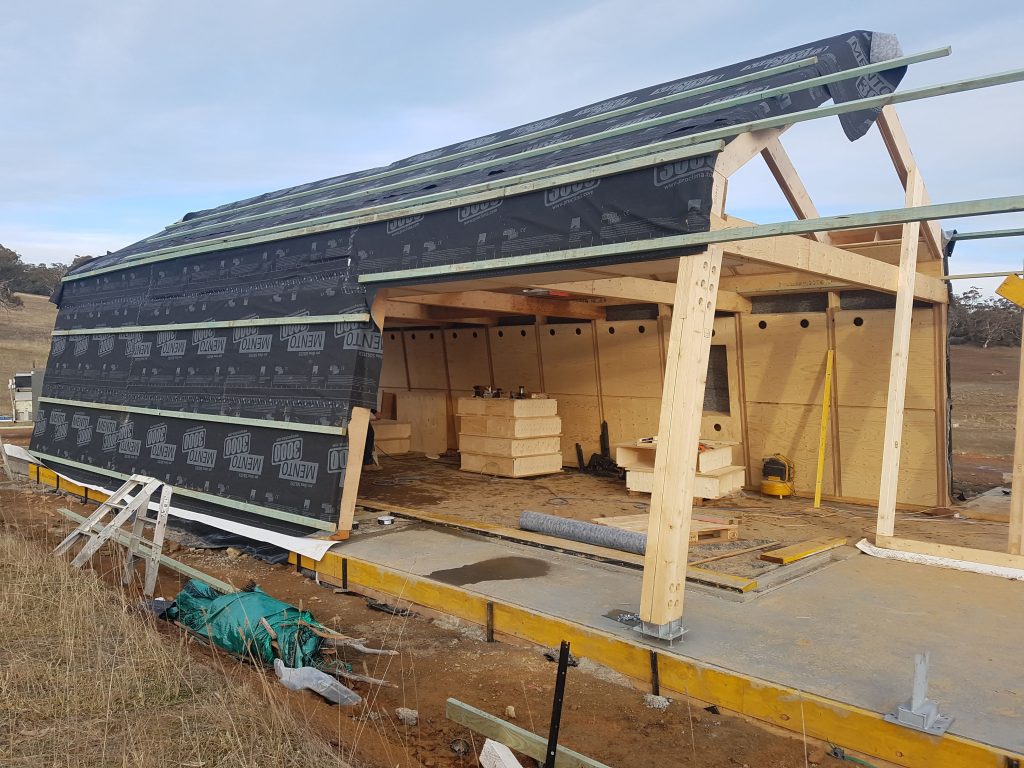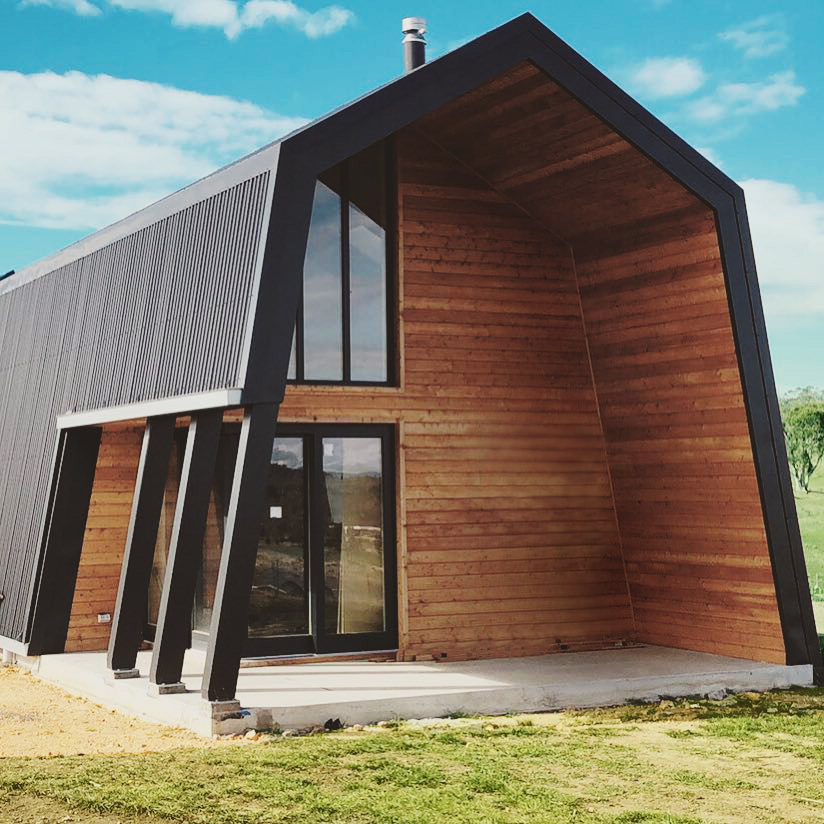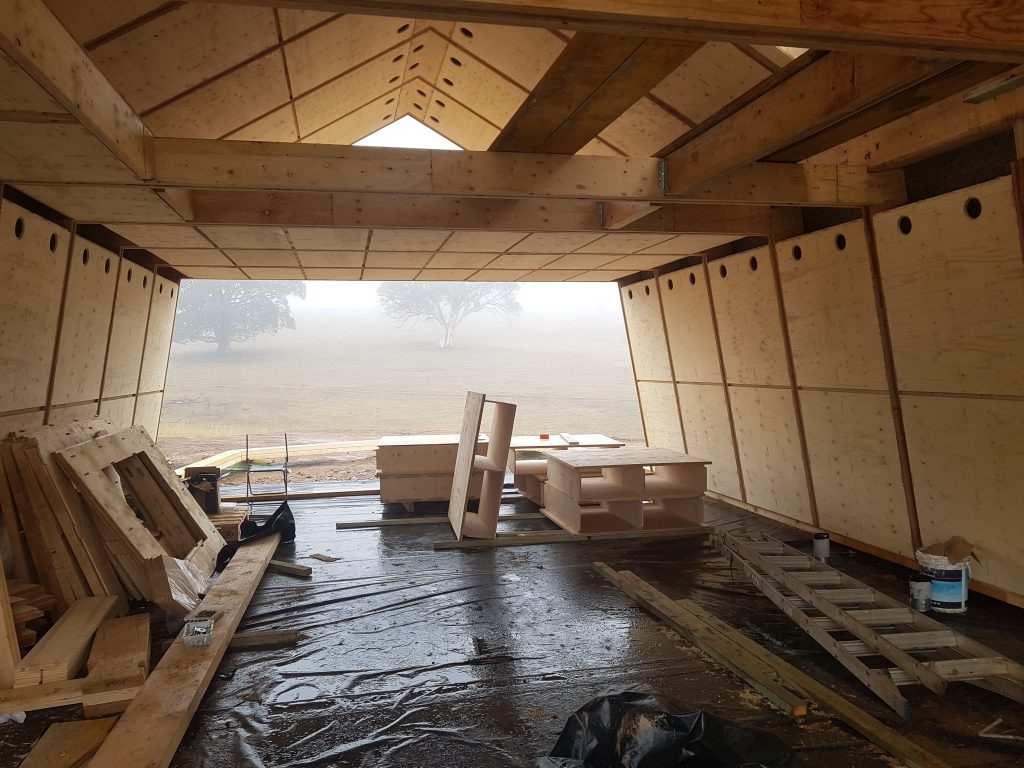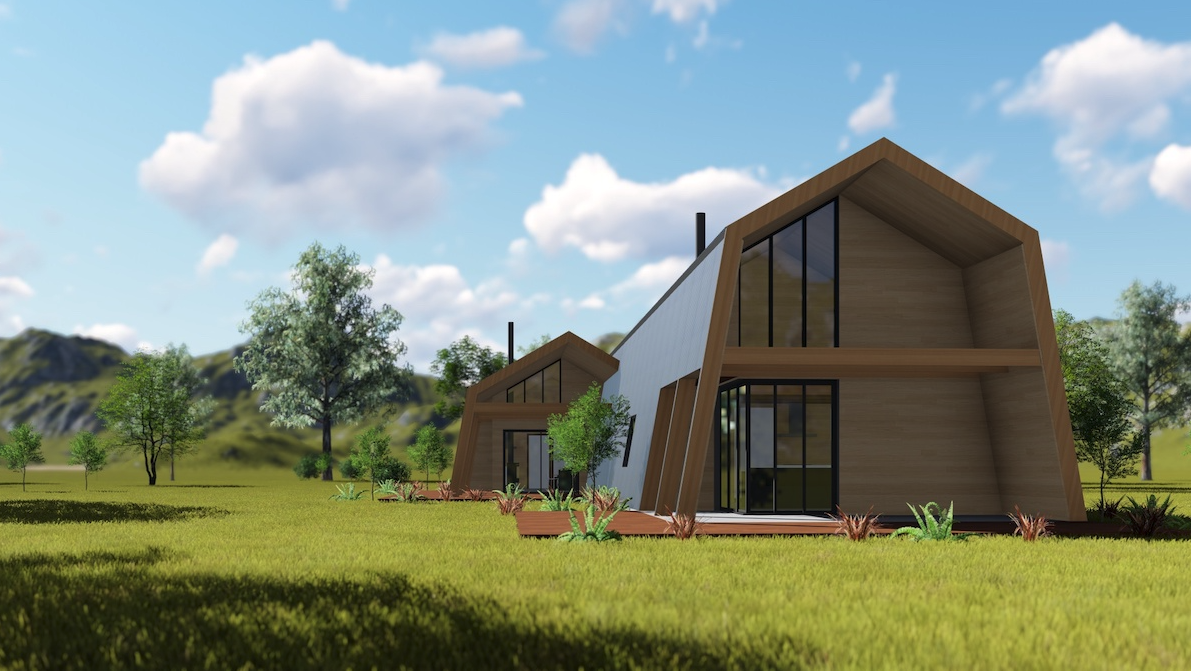
Camilla Novotna always knew she wanted to build her own timber house. It was just a question of when and where. Despite not having a formal architecture background, Camilla has now done a lot more than design her future home. Along with her sister Pavla, she has created ecokit – a prefabricated building system offering energy homes that can be put together by anyone.
Ecokit in the Mountains
The site of the first two Ecokit projects is as impressive as the house itself. A rugged section of the Snowy Mountains near Lake Jindabyne and not far from Australia’s highest peak, Mount Kosciuszko sounds like a challenging place to build. It’s a great test site. If a house can be constructed in under seven days in this mountainous terrain, it can probably be done just about anywhere.

Prefabrication is not a new concept and is a tried and tested method for building in remote locations. But prefabricated buildings usually require a crane and sometimes a helicopter. Camilla’s design brief included the requirement that individual building components could be carried by people.
The Search for a Healthy Home
In 2015 Camilla was ready to settle down in Australia. She started searching for a small but good quality, energy efficient house. But she couldn’t find one. She had a pretty clear vision of what she wanted though so Camilla took that vision to an architect.
Camilla has shared her vision with others and it seems that she is far from alone. Many people are also looking for something similar.
A Cross between an A-Frame and a Barn

I’m pleased that Camilla took advice that led her away from a straight A-Frame house. A-Frames have their place in the Swiss Alps where the steep sides are great for safely shedding snow. People with a tight budget also assume that the simple geometry might be a cost effective way to build. However A-Frames are challenging in warmer climates and also create myriad of interior design issues.
Camilla has taken the best bits of the A-Frame design and combined it with a barn-style, European vernacular. What she’s created is a rather distinctive form for EcoKit. And judging by the initial response, a good portion of the market approves of this design.
A Self Build System
After putting the concept out there, Camilla started to receive a lot of enquires. And a lot of people wanted to know if they could built an ecokit themselves. Camilla initially thought, no. It’s too complex for unskilled people to build such an energy efficient building. But as more people asked, Camilla considered that perhaps she needed to design a system, not just a house.
The result of Camilla’s vision, investment and perseverance is a prefabricated building system for an energy efficient house. Moreover, it’s a system that can be easily assembled by almost anyone.

A Clear Demand
The original concept of ecokit attracted over 200 expressions of interest within the first two weeks. This grew to over 3,500 expressions of interest within twelve months, giving Camilla confidence to move ahead with engineering and detailed design.
A Passive House Ecokit
When Camilla heard about Passive House during her research, the concept made total sense to her. She was attracted to the scientific nature of Passive House. It meant that the combination of airtightness, insulation and ventilation would provide reliably healthy living conditions for ecokit homes. At the time of writing, ecokit is not yet certified as Passive House. Camilla is confident that it will only be a matter of adding a few certified components to achieve Passive House.
The first two ecokit houses were built in 2018 as tourist accommodation at Avonside Alpine Estate near Lake Jindabyne, Snowy Mountains. Check out Camilla’s three part case study on this project.
Now it’s onwards and upwards for Camilla, Pavla and ecokit. Camilla may not have her own dream home just yet, but she’s created something much more. Having invested all her money and the last few years of her time, she has now created a prefabricated building system the offers energy efficient, healthy living for almost anyone.
Check out available designs and indicative pricing on the ecokit website. You can also find ecokit on Facebook, Twitter, Instagram, YouTube, LinkedIn and in multiple write ups around the web.

Leave a Reply